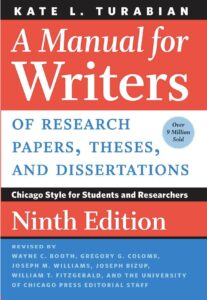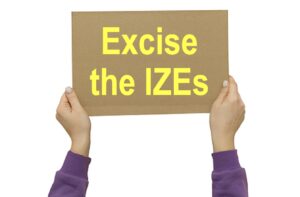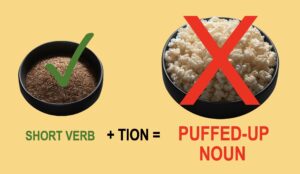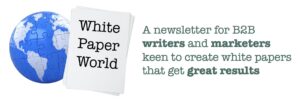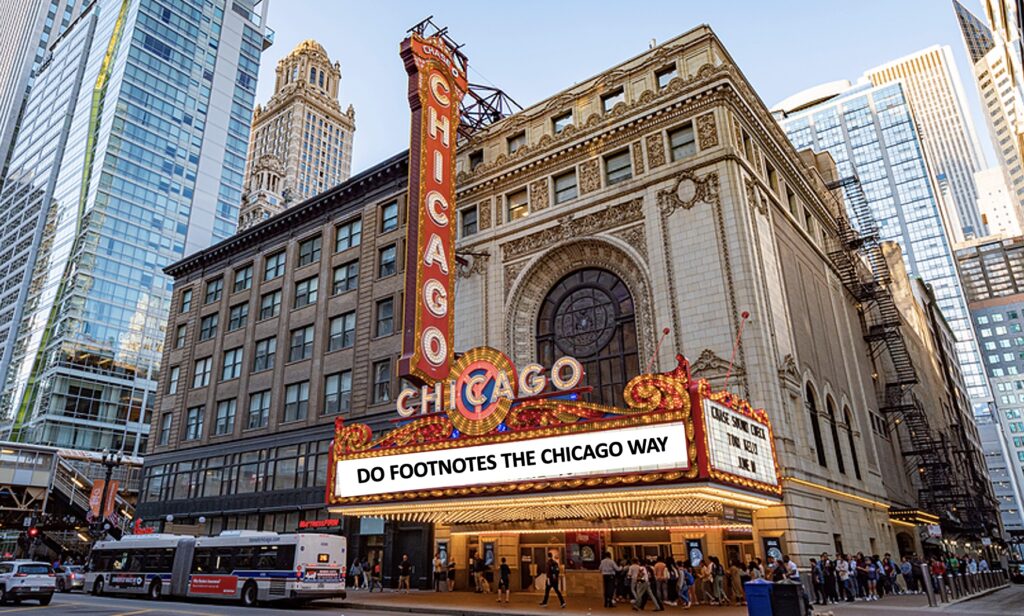
Quick tip: Do footnotes the Chicago way
So you’re writing a white paper with lots of sources.
So you’re writing a white paper with lots of sources.
Way to go on doing your research!
Now you need footnotes (or endnotes) to cite those sources. But how do you format the pesky things?
Just stick in URLs and call it done?
Well, I’ve seen plenty of white papers that handle sources that way. But that’s really not ideal.
What if that URL changes or that page is taken down?
That happened to me recently: A source I found three weeks ago when I started a white paper had vanished overnight.
It’s better to give an expanded footnote that shows the full story on your source.
And for that, I use the Chicago Manual of Style Notes style, like this:
Author-first-name Author-last-name, “Title of article or book,” Publication-or-Publisher, Date, page (if needed), retrieved from URL-with-active-link
A quick example
Consider the story about a class action suit against Google:
https://www.usatoday.com/story/money/2023/06/13/google-settlement-search-payout/70318406007/
Here’s how that citation looks in the Chicago Notes format:
Kate Perez, “Google Search agrees to pay $23 million settlement and you may be entitled to a portion,” USAToday.com, last updated 16 June 2023, retrieved from https://www.usatoday.com/story/money/2023/06/13/google-settlement-search-payout/70318406007/
See how that gives your readers everything they need to know, in an easy-to-scan format?
And the active URL means they can check the original story with one click.
Four little tweaks I use
I like to keep all my white paper sources as human-readable as possible.
So here are four things I’ve started to tweak with this format:
- Author’s name: I prefer names in the natural order like Joe Blow rather than Blow, Joe and that’s fine with Chicago.
- Date: I prefer the European format 10 July 2023 rather than July 10, 2023 mainly to eliminate one comma and make the citation cleaner.
- Publication: For newspapers and magazines where I only saw the article online, I say Publication.com instead of just Publication, as in Thenewyorktimes.com instead of The New York Times.
- Retrieved: You can include the date you found that source, or leave it out. These days I often leave it out, because who really cares?
Where to find out more
For a quick reference to the Chicago notes format, see this handy online guide. That page really covers all the basics, for free.
To find out more, see the wonderfully useful book A Manual for Writers by Kate Turabian.
Beyond footnotes, this book covers planning, research, writer’s block, and much more.
It’s a steal for about $15 from Amazon.
I didn’t discover this in college like generations of other students have. But it’s certainly been a big help for me in writing white papers.
I don’t have any other book with so many sticky notes plastered all over it.
And a lot of those are in the chapter on how to format Notes!
Footnotes or endnotes?
There’s a tradeoff between bottom-of-the-page footnotes and end-of-the-document endnotes. Footnotes are more visible, so they show off your research. But they also disrupt readers more.
So these days, I tend to use endnotes at the back of the white paper.
For a full discussion of this issue, see my article Footnotes or endnotes in a white paper?
For more useful tips like this, subscribe to my newsletter White Paper World.

